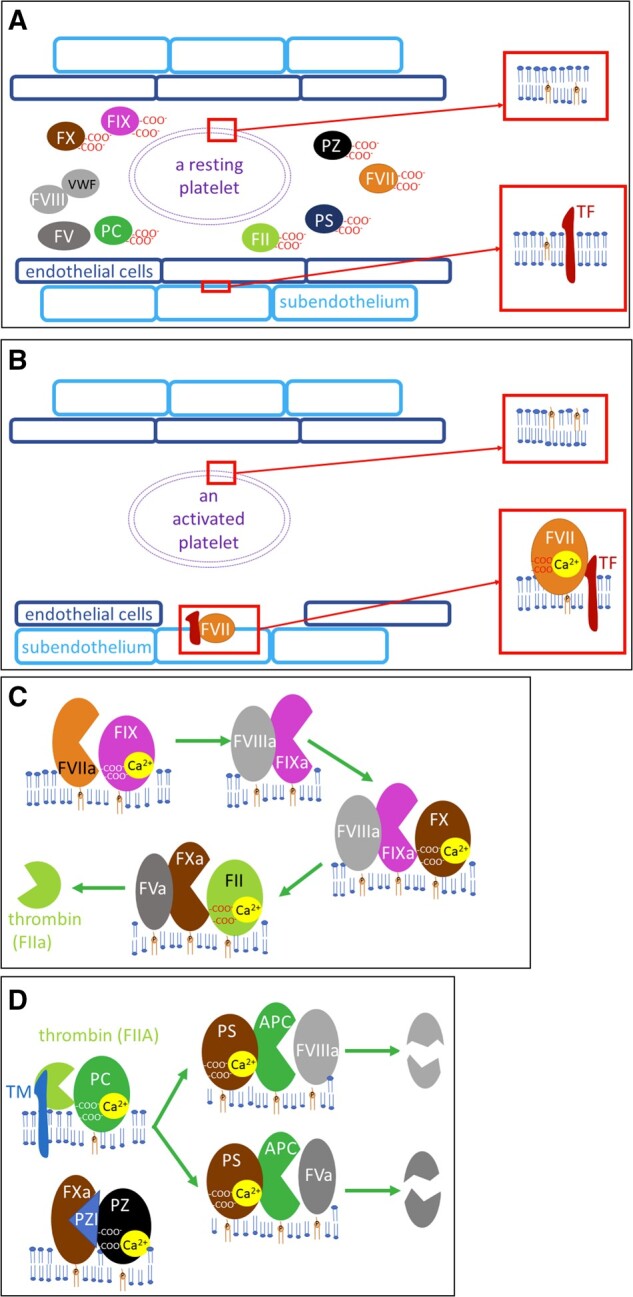Figure 4.

Vitamin K (pro)coagulatory and anticoagulatory factors. A: Resting state: coagulation factors are found in inactive forms in circulation, phosphatidylserine is not at the surface of the platelets (see the upper magnification), and tissue factor (TF) is not in direct contact with the blood (see the lower magnification). B: Activation of blood coagulation: in case of vascular damage, TF on subendothelial cells is now available for factor VII (FVII), which is activated. Platelet activation leads to modifications in the structure of the plasmatic membrane, with the exposure of phosphatidylserine on its surface. C: Activation of vitamin K–dependent coagulation factor: activated factor VII (FVIIa) cleaves factor IX (FIX) into an active enzyme (factor IXa, FIXa), which needs activated factor VIII (FVIIIa) for its activity. This complex activates factor X (FX) into an active enzyme (FXa), which needs activated factor V (FVa) for its activity. The whole FXa, FVa, calcium and phospholipid complex is also known as prothrombinase, and it activates thrombin (factor II, FII). Factor V (FV) or factor VIII (FVIII) are activated either by FXa or thrombin (not shown). D: Regulatory anticoagulant vitamin K–dependent factors: thrombin with thrombomodulin (TM) cleaves inactive plasma protein C (PC) into the active enzyme APC. For its enzymatic activity, APC also needs protein S (PS). PS does not require proteolysis in order to be active in PC-catalyzed lysis. This complex cleaves both FVa and FVIIIa. Protein Z (PZ) is a cofactor of PZ-dependent protease inhibitor (PZI), which blocks the enzymatic activity of FXa
